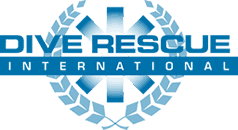Swiftwater Rescue training in the fall? You bet! Register now for Swiftwater Rescue I training in West Seneca, New York! It is coming up fast – October 22-24 – don’t wait!
Class will begin at 5 PM on October 22, resulting in longer field days. Please check the program flyer for an estimated schedule.
https://diverescueintl.com/wp-content/uploads/2021/09/SWR1_WEST-SENECA-NY-OCT-22-24-2021.pdf
Swiftwater Rescue I is Dive Rescue International’s renowned three day (24 hour) training program. Swiftwater rescue operations are inherently dangerous and with the complications of fast current, low-head dams, and/or hidden debris they can become deadly. Prepare for these special hazards by learning how to organize and manage safe swiftwater rescue operations. Participants in this program should be prepared for multiple in-water scenarios.
This program is presented in the classroom and open-water to allow students to become familiar with different field scenarios. Successful completion of this program is measured in class participation and an end of program comprehensive test.
Key training topics and the associated objectives include:
SWIFTWATER ORIENTATION
• Identify examples where fast moving water is moving in a linear direction (swiftwater)
• Define the four river references as they relate to facing downstream
• Name the basic characteristics of moving water and what factors can change those characteristics
• Describe the two types of flow associated with water moving through a river bed and the four characteristics of water dynamics
• Define surface velocity and its formula
• Describe the five different river characteristics that require caution
• List and define the six categories of swiftwater
HAZARD AWARENESS
• List and give specific examples of swiftwater hazards
• Describe what low-head dams are used for, describe the cross section, and define the challenges and hazards associated with them
• Preplanning and Equipment
• Identify when preplanning potential accident sites should be done
• List the information that should be included on a Hazard Assessment Form
• Name sources that help with locating hazard and accident sites
• Discuss personal protective equipment (PPE) for both shore-based and in-water rescuers
• Identify what should be included in team equipment
• Define what the SANE approach is
FUNDAMENTAL RESCUE TECHNIQUES
• Describe the proper body positioning for a self-rescue technique
• Identify the four rescue methods, in order of preference, for a victim rescue and explain each one individually
• List the dynamics of using a throw bag and describe the correct and incorrect ways for a rescuer to hold the loop of the throwline bag
• Define a shallow water crossing and the three different forms of maneuvers
• Technical Rescue Systems
• List and describe the four technical rescue systems
• Identify and describe the different rescue hand signals
GENERAL PATIENT CARE
• Describe the medical considerations for general patient care
• Define the field management standards of patient care
• Explain hypothermia and when it can occur
• Define the acronym FAILURE
KNOTS AND RIGGINGS
• Identify the different anchor/riggings systems
• List and describe the different types of knots and in what scenarios they would be used
PREREQUISITES
All students must be a current member of a public safety agency and at least 18 years of age. This program
is designed for personnel who are physically fit. Participants are encouraged to participate after successfully
completing the IADRS Watermanship Test or testing to a fitness level of 13 MET (Metabolic Equivalents)
or greater. Participants with aerobic fitness questions or concerns should consult their physician prior to
in-water training. Participants who have poor aerobic fitness may attend this program as surface support
personnel with the approval of the instructor.
BE SURE TO BRING
All students should bring: clothing appropriate for weather conditions, adequate footwear, watersports
helmet, and U.S. Coast Guard approved P.F.D. (Type III or V) with whistle and cutting tool, and pen and
paper. In-water participants must provide their own wetsuit or swiftwater dry suit, water rescue gloves, work
gloves and fins.

